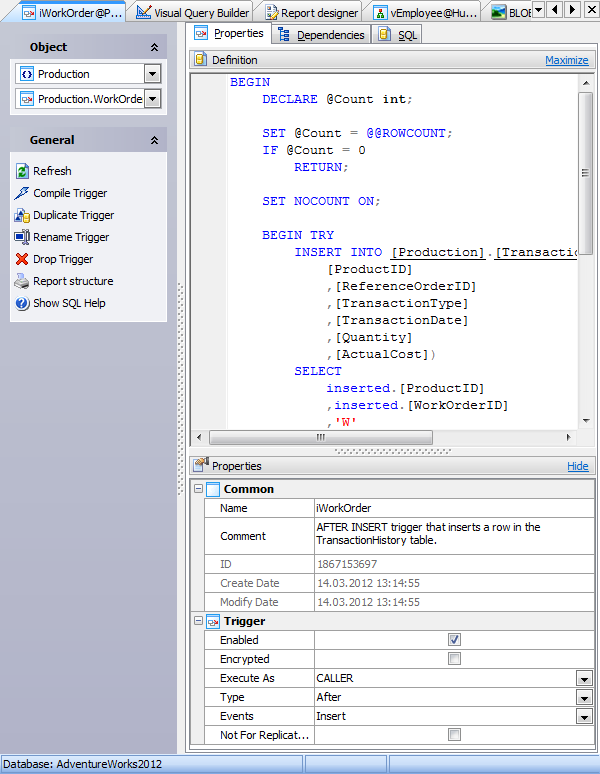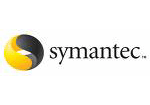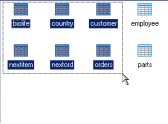MS SQL Maestro online Help
| Prev | Return to chapter overview | Next |
Trigger Editor
Trigger Editor can be opened automatically after the trigger is created and is available on editing the trigger.
The basic principles of Object Editors in MS SQL Maestro are explained in a separate topic. Below you will find a description of editor tabs that are unique for the current object.

The main tab of the editor consists of several parts:, trigger definition, and trigger properties.
Definition
Defines the trigger conditions and actions.
Properties
Name
Here you can view and change the trigger name.
Note: the name of the object must be unique among all the object names in its container. Moreover, all the objects that are source of data need unique names among themselves. You can use any identifier that is allowed by Microsoft SQL server.
Comment
This field contains a comment to the trigger.
Create Date
Displays the date when the trigger was created.
Modify Date
Displays the date when the trigger was last modified.
Encrypted
If checked, it prevents the trigger from being published as part of SQL Server replication.
Execute As (With Exec)
Specifies the security context under which the trigger is to be executed.
Type
Specifies the trigger type.
After: the trigger is fired only after all operations specified in the triggering SQL statement have executed successfully.
Instead Of: the trigger is executed instead of the triggering SQL statement, therefore, overriding the actions of the triggering statements.
Events
One of Insert, Update, or Delete; this specifies the event that will fire the trigger.
 Enabled
Enabled
If checked, the trigger is enabled.
 Not For Replication
Not For Replication
If checked, it is indicated that the trigger should not be executed when a replication agent modifies the table that is involved in the trigger.
To apply the changes, select the Apply Changes item in the Navigation bar or use Ctrl+F9 or Ctrl+F7 shortcut keys.
It is also possible to modify object properties without opening the object editor: use the Object Properties item of the popup menu of the selected object from the explorer tree.
| Prev | Return to chapter overview | Next |





 Download
Download Buy
Buy
